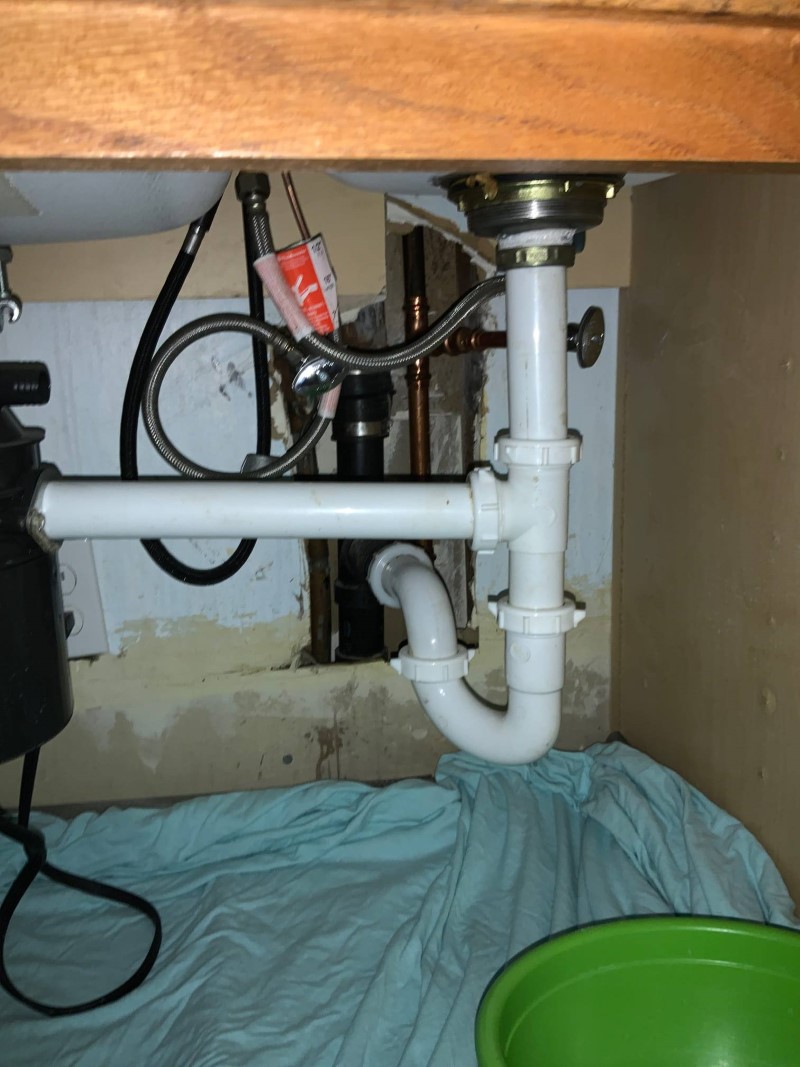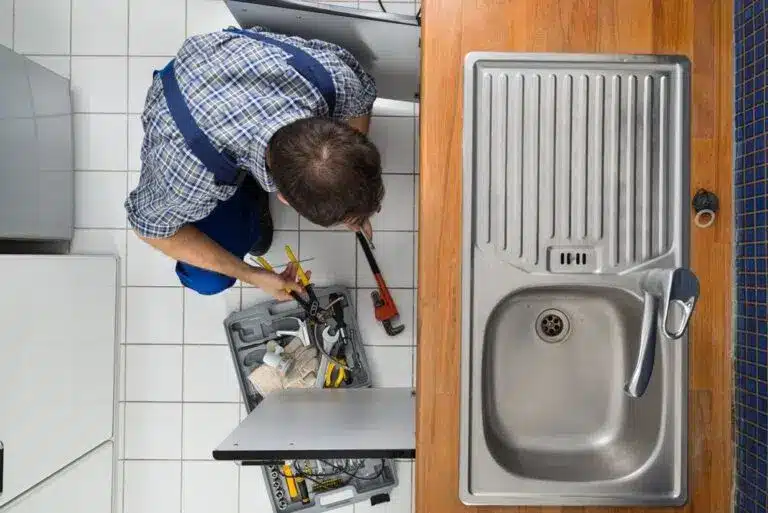The content down below on the subject of Why Is is rather remarkable. Read on and draw your own personal conclusions.

Garbage disposals are vital kitchen devices that assist in disposing of food waste efficiently. Nonetheless, a leaking waste disposal unit can be a frustrating and messy trouble to deal with. Thankfully, several leakages can be dealt with conveniently with a few basic actions. In this article, we will certainly discuss how to deal with a leaking garbage disposal successfully.
Intro
Waste disposal unit are mounted under kitchen sinks and are designed to shred food waste into smaller sized items, enabling it to pass through the pipes system easily. While these gadgets are normally trusted, leaks can occur with time due to wear and tear, loose connections, or damages to the system.
Step-by-Step Guide to Taking Care Of a Dripping Waste Disposal Unit
Turn Off the Power
Before trying any fixings, make sure that the power to the garbage disposal device is turned off to stop the danger of electrical shock.
Find the Leakage
Determine the precise area of the leakage and establish the cause
Tighten Connections
Make use of a wrench to tighten up any kind of loose connections between the disposal unit and the pipes system.
Replace Seals or Gaskets
If the leakage results from used seals or gaskets, get rid of the old components and change them with brand-new ones.
Patching Fractures or Openings
For fractures or holes in the disposal device, usage epoxy or an appropriate patching material to secure the damaged location.
Identifying the Resource of the Leakage
Before trying to repair a leaking waste disposal unit, it is important to identify the source of the leakage. This can usually be done through aesthetic assessment or by carrying out easy tests.
Visual Examination
Check the waste disposal unit system thoroughly for any indicators of water leakage. Pay close attention to locations around seals, gaskets, and link points.
Checking for Leakages
One way to examine for leaks is by running water through the disposal device and looking for any type of visible indications of leak.
Usual Sources Of Leakages in Waste Disposals
Worn Seals and Gaskets
Seals and gaskets play an important duty in avoiding water from dripping out of the garbage disposal. In time, these components can weaken, causing leaks around the disposal device.
Loose Links
The connections in between the garbage disposal and the plumbing system can come to be loosened in time, causing water to leakage out during operation.
Cracks or Holes in the Disposal Unit
Physical damage to the waste disposal unit, such as splits or openings in the housing, can additionally cause leakages.
Tools and Products Needed for Dealing With a Leaking Garbage Disposal
Prior to beginning the repair service procedure, gather the essential devices and products, consisting of a screwdriver, flexible wrench, plumbing technician's putty, substitute seals or gaskets, and epoxy or patching product for fixing splits or holes.
Evaluating the Garbage Disposal After Repair Work
As soon as the repair service is complete, examine the garbage disposal by running water through it to make sure that the leak has been solved.
Preventive Upkeep Tips to Stay Clear Of Future Leakages
To stop future leakages, it is necessary to carry out routine upkeep on your garbage disposal. This consists of maintaining it tidy, preventing placing non-food things or tough items down the disposal, and regularly checking for leakages or various other issues.
Final thought
To conclude, repairing a dripping waste disposal unit is a relatively uncomplicated procedure that can be completed with fundamental tools and products. By adhering to the steps described in this article and exercising preventive maintenance, you can maintain your garbage disposal in good working condition and prevent pricey repair services in the future.
What to Do About a Leaking Garbage Disposal
A leaking garbage disposal often goes unnoticed until you confront a sopping cabinet, a foul-smelling puddle, or an audible drip-drip-drip from the unit. The fix can be frustrating, too, because the leak can stem from a number of components in the system. Fortunately, with a little sleuthing, you can zero in on the leak and—depending on the exact location—stop the icky oozing and repair the component that caused it. Worst case scenario, if it turns out that the garbage disposal must be replaced, installing a new one is a reasonable do-it-yourself task for those with basic plumbing skills. Read on to keep the cash you’d otherwise hand over to a pro.
Prepare to find the leak
Prior to testing the garbage disposal for leaks, unplug it at the wall outlet and turn off the power from the breaker box to prevent electrical shock. Then insert a watertight sink stopper into your sink drain and wipe the unit dry with a clean cloth. In any handy container, mix a few drops of food coloring into a few cups of water, and pour the dyed water onto the sink stopper to help you locate the leak.
Investigate the source
- the top, where the disposal meets the sink drain
- the side, where the dishwasher hose or main drain pipe connects to the disposal
- or the bottom of the unit
Inspect each of these locations while gliding a light-colored rag over the unit; the dyed water will readily show on the rag and reveal the location of the leak. If a leak isn’t immediately apparent, remove the sink stopper and pour a few more cups of dyed water down the sink drain, then check for leaks again. Leaks near the top of the unit are more likely to show themselves while the sink is plugged, while side and bottom leaks are more noticeable while the sink is unplugged.
The metal sink flange that sits directly inside the sink drain is typically sealed around the top with plumber’s putty (a clay-like sealant) and then secured from under the sink with bolts. If the plumber’s putty deteriorates, or the bolts loosen, the flange can no longer form a watertight seal between the sink drain and the disposal—which could cause a leak at the top of the unit.
To reseal the leaky flange, you must first detach the garbage disposal. Start by loosening the screws securing the main drain pipe to the disposal, then loosen the screws in the metal clamp securing the dishwasher hose to the disposal and detach the drain pipe and dishwasher hose from the disposal. Loosen the screws in the mounting ring that connects the disposal to the metal mounting assembly beneath the sink, then pull down the disposal and carefully set it on a clean, dry surface. Loosen the bolts in the mounting assembly with a wrench, then pull down the mounting assembly and set it near the disposal.

Do you really like reading about Why Is ? Place feedback down the page. We'd be delighted to see your insights about this piece. We hope that you come back again before long. Are you aware of anybody else who is excited about the subject? Be sure promote it. Thank you for taking the time to read it.
Phone
Comments on “Confirmed Ways to Fix a Leaking Waste Disposal Unit”